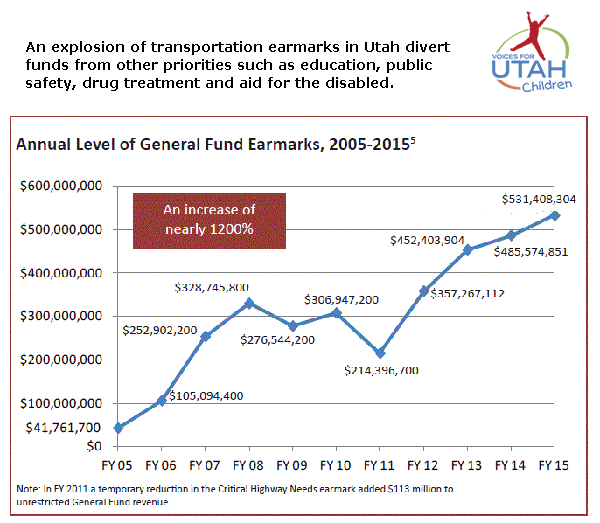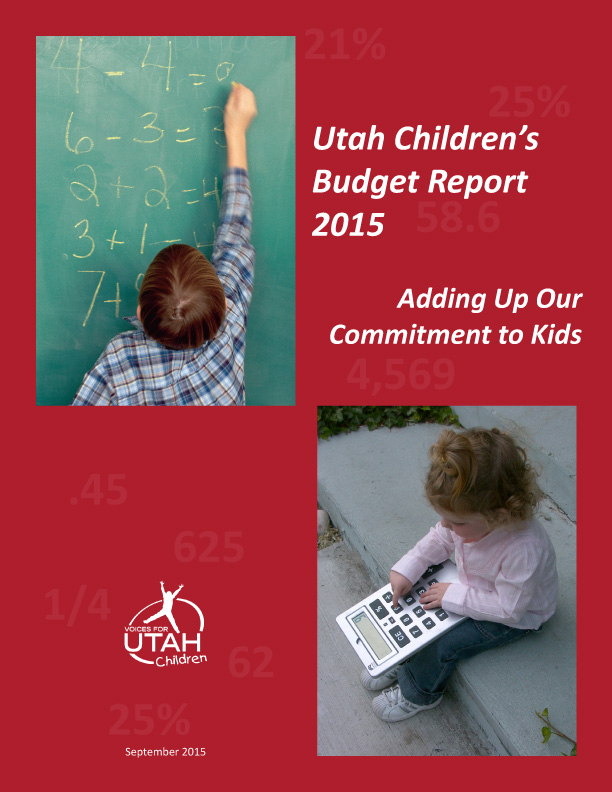Education
The Race for 49th Place
Utah has been the state with the lowest per-pupil spending on K-12 education since 1988, but in 2015, when Voices for Utah Children released the Utah Children’s Budget Report, we found reason to hope.
“The gap between Utah and Idaho has been closing steadily since 2010,” we reported. “If the current trend continues, Utah will displace Idaho in 49th place in the national rankings when new national data are released.” Reference A
Although 49th place didn’t seem like too ambitious a goal to shoot for, a year later, we are sorry to report that we didn’t overtake Idaho for their prized 49th place ranking. Utah remains at 50th place in per-pupil K-12 education spending—51st, if you count Washington DC. Reference B
There’s nowhere to go but up.
For 30 years now, Voices for Utah Children has called on our state, federal and local leaders to put children’s needs first. But the work is not done. The children of 30 years ago now have children of their own. Too many of these children are growing up in poverty, without access to healthcare or quality educational opportunities.
How can you be involved?
Make a tax-deductible donation to Voices for Utah Children—or join our Network with a monthly donation of $20 or more. Network membership includes complimentary admission to Network events with food, socializing, and opportunity to meet child advocacy experts. And don't forget to join our listserv to stay informed!
We look forward to the future of Voices for Utah Children and we hope you will be a part of our next 30 years.
Special thanks to American Express for sponsoring our 30th Anniversary Year. 
Helping Candidates Do Their Homework
The 2015 Children's Budget Report: Adding Up Our Commitment to Kids
Why a “Children’s Budget”?
Children, it is often said, are Utah’s most precious resource. They represent the workforce, consumers, and leaders of tomorrow. For that reason, the investments we make in our children today have enormous economic and social implications for Utah’s future. That is why our federal, state, and local units of government pool taxpayers’ resources to establish an education system, provide for the health and other basic needs of our most vulnerable children, and intervene in children’s lives when their safety is at risk.
This report, Children’s Budget 2015, examines public investment in children from FY2008 through FY2014. It is an update of earlier reports by Voices for Utah Children published in 2009 and 2011. This report does not assess the effectiveness of these programs or gaps in services. Rather, it objectively quantifies the level of public funding for children in Utah and identifies trends over the seven-year period.
There is a strong case to be made that no one cares more about kids than Utahns. Utah has the highest fertility rate in the country and the most children as a percentage of its population, 31% vs. 24% for the nation . Utah saw the second fastest growth rate in its child population of any state from 2000 to 2010 , second only to Nevada (which grows mostly by in-migration rather than through births). Given the high priority Utahns place on children, understanding how much is spent on children by the state and for what purposes is critically important for policymakers and the general public.
Information on funding for children is important for several reasons. It can:
1. Assist policymakers in assessing whether their funding decisions reflect, in the aggregate, their priorities with respect to children.
2. Illustrate how specific programs compare with spending on children overall.
3. Aid policymakers in examining how much is spent on children for specific purposes (i.e. for early education or child welfare) or how funding for children compares to total state and federal spending in the state.
Examining how much Utah invests in children can help the state evaluate how efficiently it is enhancing the potential of our future workforce and maximizing our investment in human capital and economic development. Public investment in children in Utah should be understood as an important component of our economic development strategy that impacts the state as a whole, both in the present and the future.
In this report, Voices for Utah Children divides all state programs concerning children into seven categories, without regard to their location within the structure of state government. The seven categories are as follows, in descending order by dollar value (based on the sums of both state and federal funds):
• Education, which makes up 90% of the state-funded portion of the Children’s Budget and 77% overall counting both state and federal funds
• Health
• Food and Nutrition
• Early Childhood Education
• Child Welfare
• Juvenile Justice
• Income Support
We then add up the expenditures in each of these areas, separating state from federal dollars, and we compare the figures over time from FY2008, the last year before the state budget began to be affected by the Great Recession, through FY2014, the most recent year for which final expenditure data was available.
Our most important finding is the following:
While the state economy has recovered from the Great Recession in a number of respects, state investment in children has not. Specifically, real (inflation-adjusted) state investment in children in FY2014 remained 6% below what it had been in FY2008, at $5,424 per child in FY2014, compared to $5,746 in FY2008.
Making up that $322 per-child gap between the FY2008 level of public investment in children and the level in FY2014 would have required an additional state expenditure in FY2014 of approximately $293 million.
This finding that state government investment in children has not yet recovered from the recession is not the only example of how Utah still remains below its pre-recession performance, even five years after the recession ended. For example, real median wages also remain below pre-recession levels and poverty rates have remained elevated well above where they were at the same point in previous economic expansions.
For more information, see the complete report:
Utah Children's Budget Report 2015
For 30 years now, Voices for Utah Children has called on our state, federal and local leaders to put children’s needs first. But the work is not done. The children of 30 years ago now have children of their own. Too many of these children are growing up in poverty, without access to healthcare or quality educational opportunities. How can you be involved?
- Celebrate the 30th Anniversary of Voices for Utah Children with us at our Children’s Champion Award Luncheon on September 30, 2015.
- Make a tax-deductible donation to Voices for Utah Children—or join our Network with a monthly donation of $20 or more. Network membership includes complimentary admission to the luncheon.
We look forward to the future of Voices for Utah Children and we hope you will be a part of our next 30 years.
Special thanks to American Express for sponsoring our 30th Anniversary Year. 
What's Still Eating Utah's General Fund?
How Unfunded Earmarks Are Undermining the Budget Process and Affecting Utah Families and Children

This explosion of earmarks has been primarily for the purpose of meeting the state’s transportation needs. The earmarks in question are all “unfunded” earmarks, meaning that none of them was created with a new revenue source to finance it, even though they address newly identified investments required to keep up with the state’s growing economy and population.
This enormous diversion of resources has meant that everything else financed by the General Fund, including education, public safety, drug treatment, aid for the disabled, support for vulnerable families, and many more, has been given short shrift, leaving critical needs unmet and allowing the state to fall behind in a number of important areas, threatening to undermine progress toward the state’s most important goals.
The rise of unfunded earmarks bears considerable resemblance to the decision made by an earlier generation of policy makers in 1996 to divert Education Fund revenues to fund higher education as well as K-12 education.
The report concludes with a call for a return to best practices in the annual budgeting process so as to allow policymakers to adapt to changing circumstances in good times and bad. Read the complete report:
What's Still Eating Utah's General Fund?
What Does the General Fund Do?
All Utahns benefit from an adequate General Fund. The state programs it pays for provide functional and efficient courts, a statewide system of colleges and universities, and the enforcement of rules regarding commercial transactions, environmental protection, water safety, control of contagious diseases, and much more. The GF also provides a safety net for families in need, including the disabled and those in need of drug treatment and mental health services.







